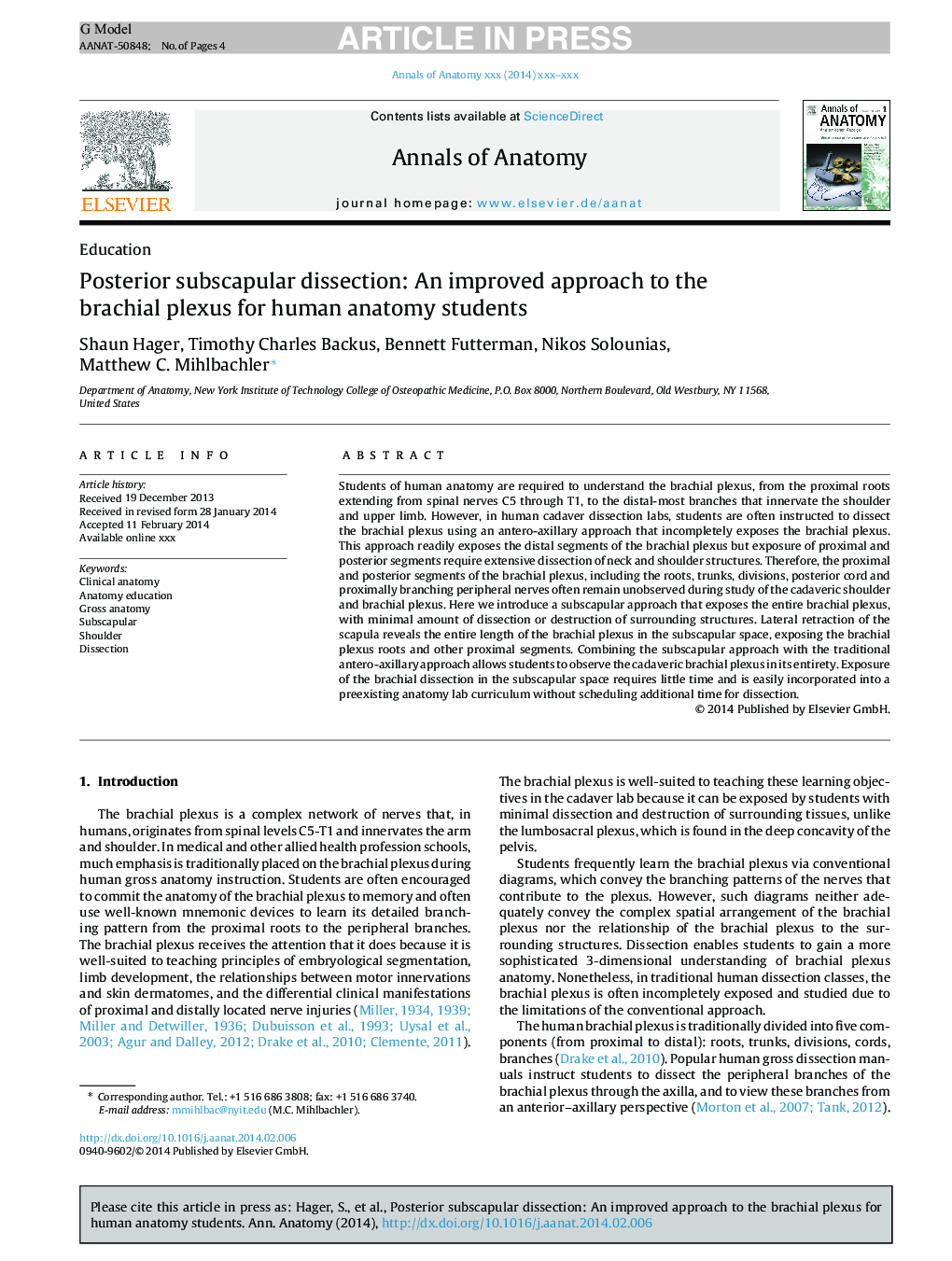| Article ID | Journal | Published Year | Pages | File Type |
|---|---|---|---|---|
| 8461184 | Annals of Anatomy - Anatomischer Anzeiger | 2014 | 4 Pages |
Abstract
Students of human anatomy are required to understand the brachial plexus, from the proximal roots extending from spinal nerves C5 through T1, to the distal-most branches that innervate the shoulder and upper limb. However, in human cadaver dissection labs, students are often instructed to dissect the brachial plexus using an antero-axillary approach that incompletely exposes the brachial plexus. This approach readily exposes the distal segments of the brachial plexus but exposure of proximal and posterior segments require extensive dissection of neck and shoulder structures. Therefore, the proximal and posterior segments of the brachial plexus, including the roots, trunks, divisions, posterior cord and proximally branching peripheral nerves often remain unobserved during study of the cadaveric shoulder and brachial plexus. Here we introduce a subscapular approach that exposes the entire brachial plexus, with minimal amount of dissection or destruction of surrounding structures. Lateral retraction of the scapula reveals the entire length of the brachial plexus in the subscapular space, exposing the brachial plexus roots and other proximal segments. Combining the subscapular approach with the traditional antero-axillary approach allows students to observe the cadaveric brachial plexus in its entirety. Exposure of the brachial dissection in the subscapular space requires little time and is easily incorporated into a preexisting anatomy lab curriculum without scheduling additional time for dissection.
Related Topics
Life Sciences
Biochemistry, Genetics and Molecular Biology
Cell Biology
Authors
Shaun Hager, Timothy Charles Backus, Bennett Futterman, Nikos Solounias, Matthew C. Mihlbachler,
